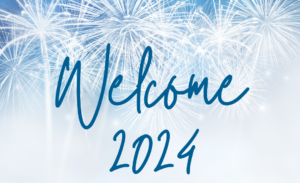 A couple of months ago, I wrote about your learning agenda for 2018. In it, I mentioned that I was joining The Next Big Idea Club and promised to share some of my learnings from the books provided to club members. This post is the first installment of my learnings, and the book I just finished is The Culture Code by Daniel Coyle.
A couple of months ago, I wrote about your learning agenda for 2018. In it, I mentioned that I was joining The Next Big Idea Club and promised to share some of my learnings from the books provided to club members. This post is the first installment of my learnings, and the book I just finished is The Culture Code by Daniel Coyle.
The book focuses on what leaders do to build a culture within teams or organizations they lead. Three key leadership skills are identified for creating a healthy culture within a team:
- Build Safety
- Share Vulnerability
- Establish Purpose
The idea I found particularly interesting dealt with the different approaches to leadership, based on the purpose of the team.
Are you leading a team whose purpose is Proficiency OR Creativity?
Mr. Coyle distinguishes the difference between the two as this:
- Leading for Proficiency, the leader helps the group deliver a well-defined, reliable performance. He used a world-class restaurant and professional sports team as examples.
- Leading for Creativity, the leader helps the group create something new. He used Pixar as an example.
When the team’s purpose is Proficiency, the leader should provide a clear, simple set of priorities; functioning like a lighthouse, by orienting behaviors and providing a path toward the desired goal. Leaders should:
- Rank and frequently communicate the team’s priorities
- Name keystone behaviors to provide a clear mental model for how you expect team members to behave
- Flood the environment with examples and recognition when the right behaviors are demonstrated that link the two
When the team’s purpose is Creativity, the leader should speak less and observe more, creating physical space for people to gather and share ideas. Leaders should:
- Hire people smarter than you – be humble and self-aware of your own strengths and weaknesses
- Allow the team to fail early and often – make it safe to “fail” by debriefing lessons learned and encouraging team members to keep trying
- Listen to everyone’s ideas – ask provocative questions, talk less, and be fully present to listen
- Limit direct involvement with creative decisions for two reasons: 1) People need to discover what to do for themselves and teams are in a better position to solve problems, 2) Suggestions from a powerful person tend to be followed
What struck me about this distinction is that many leaders have teams that need to be both proficient and creative. While a team’s function within the organization may have a proficiency purpose, there are often times when creativity is needed to innovate and excel.
How should a leader flex between the two approaches without causing frustration and disengagement among their team members?
I think it comes down to constant communication with your team – calling audibles throughout the day:
- Clearly articulate the team’s purpose and priorities – depending on the maturity and experience of your team, this may need to be communicated daily.
- Catch people doing something right – acknowledge and recognize the behaviors you want to see duplicated; let others see you do this so they can connect the dots.
- Announce and remind the team of your leadership approach – great leaders are able to flex to what is called for in a given situation. When team members are doing work that is more focused on either Proficiency or Creativity, make sure they understand how your behaviors may change.
Example: While the team is brainstorming and developing ideas, I will be asking more questions and will keep my opinions to myself, until the team has some solution options. Then, I’ll weigh in and help facilitate making the final decision.
Leading in a way that best suits what the situation calls for can be tricky. Leaders must be aware, nimble, and constantly communicate intent with the team to effectively manage expectations.
Martha Duesterhoft is a Partner with PeopleResults. Follow her on Twitter @mduesterhoft or connect via email at mduesterhoft@people-results.com.




